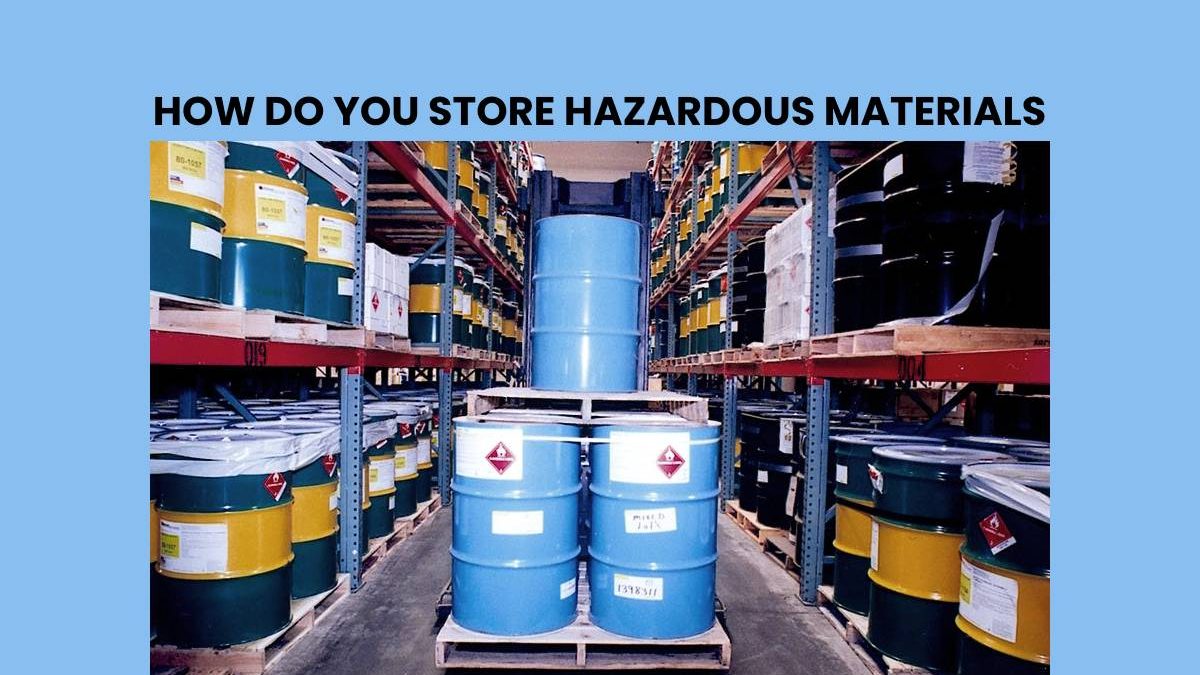HOW DO YOU STORE HAZARDOUS MATERIALS
Ever examined the labels of your cleaning products? Did you know that the majority of household supplies contain toxic substances which can potentially harm your health? These include cleaning agents, batteries, and aerosol bottles and if they are not stored properly, they can have serious adverse effects on your health and surroundings.
Let’s read on to find out how you can store hazardous materials safely and securely.
Table of Contents
What are Hazardous Substances?
Substances that have a bad effect on human health or the environment are classified as hazardous. It is, therefore, important to familiarize oneself with the potential hazards of using such products and take adequate precautions to proceed with hazardous warehousing.
If you look up the internet, you will find that there is no ‘all-in-one’ list for toxic substances, but a handy rule of thumb is that any material which comes with a Safety Data Sheet (SDS) is considered to be a hazardous material, and must be stored in accordance with the guidelines of Hazmat Warehousing techniques. Failure in doing so can result in:
- Fires
- Spills
- Explosions
- Toxic reactions
- Harmful exposures
- Contamination of chemicals
You must, therefore, pay close attention to the product’s labels and any instructions on how to handle them safely.
What is Hazmat Warehousing?
Hazmat Warehousing simply refers to the storage of hazardous chemicals so that they are not lying around carrying unnecessary risks. Since every chemical is unique, there is no single technique of storage that applies to all.
The best warehousing approach, then, is the one that takes into account the various properties of chemicals being stored and the conditions under which they should be stored. Here are some of the most fool-proof techniques to store hazardous materials safely.
1. Keep Like Chemicals Together
Chemicals that are alike in properties should be stored in a single compartment and away from chemicals that might cause a reaction if mixed. Such chemicals should also be sealed tightly as any leak can be harmful or even life-threatening. It is also essential to store them at a lower height to minimize any chances of spillage.
2. Clearly Labeled and Dated
When storing hazardous materials, it is important to label and date them properly. To accomplish this, check out the product labels to determine their shelf life. Expiry dates tend to vary when it comes to chemicals and, hence, it is necessary to comply with them. Label each chemical with a comprehensible name and its respective date of expiry.
Many chemicals tend to form dangerous peroxides over the course of years and this can lead them to explode upon contact. Hence, it is necessary to
safely store each chemical in its original packaging.
3. Special Attention to Flammable Materials
Flammable materials are those which can easily catch fire, and due to this reason, they pose a special threat to the environment.
To prevent risks or eliminate their detrimental effects, flammable substances should be tightly secured in an exclusive cabinet or shelves in a warehouse, with a fire label clearly visible. In addition, it is also important that flammable materials be stored according to their temperature requirements, as liquids change their state with any temperature fluctuations.
4. Do Not Forget Volatile Liquids
Volatile liquids evaporate rapidly at room temperatures; a familiar example would be acetone found in nail polish removers. These liquids evaporate to produce fumes that may accumulate in storage cabinets, which can lead to serious consequences. Store volatile substances in well-ventilated rooms to prevent toxic fumes from getting inhaled.
5. Keep Them Out of Reach
With the threat that hazardous chemicals carry, it is only reasonable that they should be kept out of reach, especially of the children. As many as five hundred children are rushed to the hospital and treated for swallowing something poisonous on a weekly basis. Adults are equally vulnerable to such risks.
To avoid accidents and mishaps, keep the chemicals locked in a secured and isolated space. The more secured and restricted their access is, the lower are the chances of accidents. Even in the workplace, only a few employees should have access to storage rooms.
Finally, an integral part of hazmat warehousing includes periodic checks. Storage areas should be maintained on a weekly basis with a thorough inspection of storage containers. Look out for any apparent fumes or suspicious smells. Have your partners trained alongside you and stay safe.

